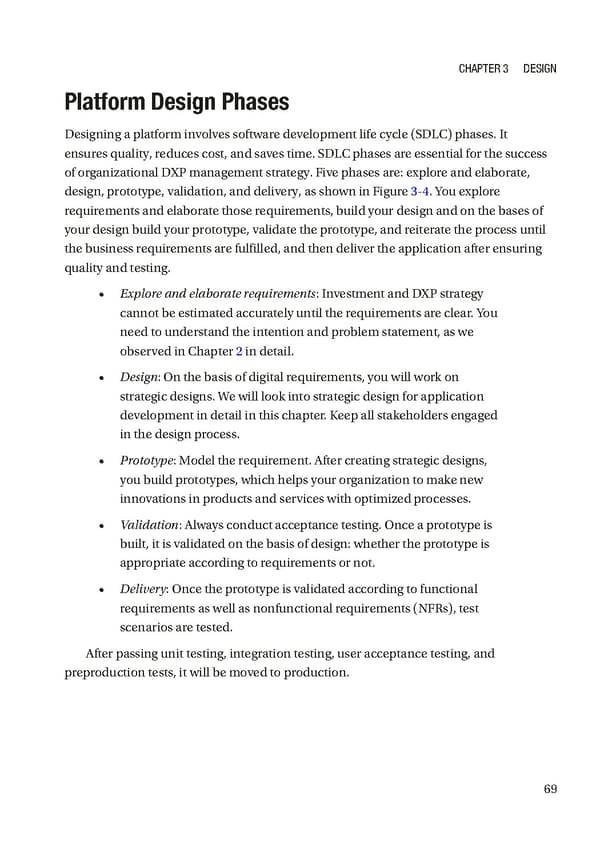Chapter 3 Design Platform Design Phases Designing a platform involves software development life cycle (SDLC) phases. It ensures quality, reduces cost, and saves time. SDLC phases are essential for the success of organizational DXP management strategy. Five phases are: explore and elaborate, design, prototype, validation, and delivery, as shown in Figure 3-4. You explore requirements and elaborate those requirements, build your design and on the bases of your design build your prototype, validate the prototype, and reiterate the process until the business requirements are fulfilled, and then deliver the application after ensuring quality and testing. • Explore and elaborate requirements: Investment and DXP strategy cannot be estimated accurately until the requirements are clear. You need to understand the intention and problem statement, as we observed in Chapter 2 in detail. • Design: On the basis of digital requirements, you will work on strategic designs. We will look into strategic design for application development in detail in this chapter. Keep all stakeholders engaged in the design process. • Prototype: Model the requirement. After creating strategic designs, you build prototypes, which helps your organization to make new innovations in products and services with optimized processes. • Validation: Always conduct acceptance testing. Once a prototype is built, it is validated on the basis of design: whether the prototype is appropriate according to requirements or not. • Delivery: Once the prototype is validated according to functional requirements as well as nonfunctional requirements (NFRs), test scenarios are tested. After passing unit testing, integration testing, user acceptance testing, and preproduction tests, it will be moved to production. 69
 Building Digital Experience Platforms Page 88 Page 90
Building Digital Experience Platforms Page 88 Page 90